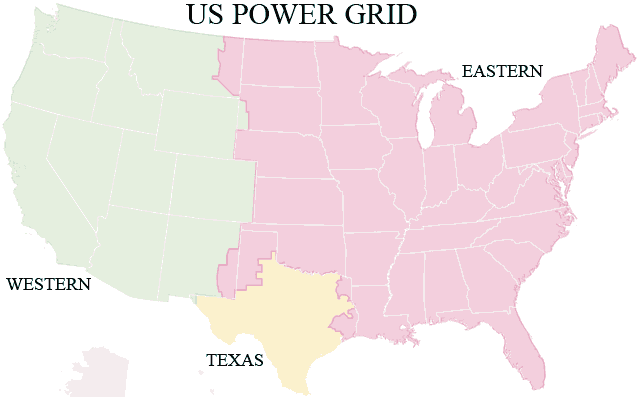The United States produced 3,836 billion kilowatt-hours (kwh) in 2002, 3,673 billion kwh comes from the electric power sector, whereas the rest comes mainly from combined heat and power (CHP) facilities in the commercial and industrial sectors. Energy for the electric power sector is divided into a few sources: coal-fired plants 52%, nuclear 21%, natural gas 16%, hydroelectricity 7%, oil 2%, geothermal and other 1%. Recently, the use of coal-fired plants is declining, because these plants are not efficient: they have high capital cost, and a long construction period. Natural gas plants are more efficient, so they are growing fast. Nuclear plants have been growing slowly, because of high initial costs. In addition, all energy that is generated by any kind of plants must be transmitted to consumers, for which transmission lines are used.
Transmission lines, when interconnected with each other, become transmission networks. In the US, these are typically referred to as “power grids” or just “the grid.” The most recent news about the US grid system is that it has been changing over to a “smart grid.” In 2009, Obama announced new plans for renewable energy, and according to his speech $3.4 billion would go toward developing the nation’s electric grid. He said that the old system was so inefficient that it costs too much for the US. Therefore, the old system will be changed to a “smart grid”.
“Smart grid” is basically a class of technology used for delivering energy in the 21th century. This system is made by two-way communication technology and computer processing. It is beginning to be used on different electricity networks that linked up power plants, homes, and businesses. The greatest benefit of using this system is energy efficiency. Another benefit is that companies do not need to send their workers to gather the usage data required to provide and bill for electricity. Each device on a network can have sensors to gather the data; for example, power meter, voltage detector, fault detectors are some of these sensors. Finally, the most important feature of the smart grid is automation technology is that it lets the utility adjust and control each individual device or millions of them from a central office.
click here if you wan more information about “smart grid” http://energy.gov/oe/technology-development/smart-grid
Sources
David, Jackson. “Obama announces $3.4 billion for ‘smart grid’.” USA Today n.d.: Academic Search Complete. Web. 1 Feb. 2013.
“Energy.gov.” Smart Grid. N.p., n.d. Web. 01 Feb. 2013.
Traffic.” Washington Post. N.p., 01 Aug. 2012. Web. 01 Feb. 2013
